Baseball History Comes Alive Now Ranked #2 by Feedspot Among All Internet Baseball History Websites and Blogs!
Guest Submissions from Our Readers Always Welcome!
Scroll Down to Read Today’s Essay
Subscribe to Baseball History Comes Alive for automatic updates. As a Free Bonus, you’ll get instant access to my Special Report: Gary’s Handy Dandy World Series Reference Guide!
1946 World Series Photo Gallery
Click on any image below to see photos in full size and to start Photo Gallery:
Today Vince Jankoski returns with an interesting essay on the 1946 World Series and Enos Slaughter’s “Mad Dash.” Vince does a “deep Dive” into the play and turns up information I was previously unaware of. I think you’ll enjoy it. Check out the 30-second clip of the play and judge for yourself where the blame lies. -GL
The Classic 1946 World Series:
Enos Slaughter’s “Mad Dash”
The 1946 season was a great one for MLB. World War II had ended, the regulars returned, and attendance soared.
The Series went seven games. The deciding contest was played in Sportsman Park in St. Louis. In the top of the eighth inning with the Cards leading 3-1, Red Sox center fielder Dominic DiMaggio doubled home two runs, tying the score. However, DiMaggio was injured on the play and was replaced by pinch-runner Leon Culberson. Significantly, Culberson also replaced DiMaggio in center field in the home half of the inning. DiMaggio was a great outfielder, one of the best of his generation. Culberson not so much.
Slaughter led off the bottom of the eighth with a single. The next two batters (Whitey Kurowski and Del Rice) made outs, bringing to the plate Harry “The Hat” Walker. With the count 2-1, pitcher Bob Klinger delivered to Walker. Slaughter took off with the pitch. Walker lined to center field. Culberson fielded the ball and threw to shortstop Johnny Pesky. Third base coach Mike Gonzalez motioned for Slaughter to hold up at third base, but Slaughter ignored the signal and barreled for home. According to some, Pesky held the ball and did not immediately throw the ball to catcher Roy Partee. In any event, Pesky’s relay throw was late and off the mark, allowing Slaughter to score what proved to be the winning run of the deciding game. The episode has been dubbed “Slaughter’s Mad Dash”.
Red Sox fans have since argued as to the cause of allowing Slaughter to score all the way from first on what some have labeled a single by Walker. Actually, Walker was credited with a double, although arguably Walker advanced to second only on Pesky’s throw to the plate.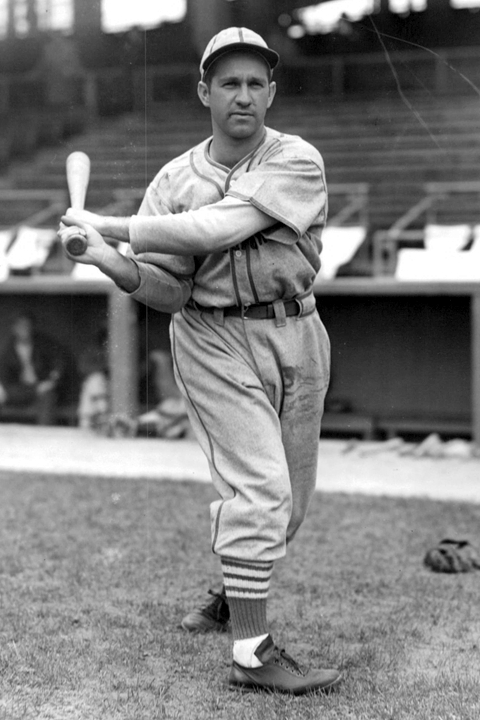
Some fans have blamed Culberson. Had DiMaggio been in center, he surely would have gotten to the ball faster than Culberson and made a stronger throw to Pesky. However, most fans assessed blame on Pesky’s “delay” in relaying the ball to the plate. Defenders of Pesky assert that there was no “delay”.
Fortunately, in the twenty-first century, there is You Tube to resolve the issue. The video available on You Tube, albeit grainy, clearly shows Pesky holding the ball. Perhaps more importantly, the video demonstrates why Pesky held the ball.
As any youth baseball coach will tell you, the proper way for an infielder to execute the relay from the outfield has several steps. First, the infielder (second baseman or shortstop) moves to a position on the outfield grass, hopefully creating a straight line with the outfielder and the base to which the ball is to be relayed. Then, realizing that the outfielder is looking at the ball he is chasing and not the infielder, the infielder must make himself “big” so that he will be more easily seen by the outfielder once the outfielder fields the ball and looks for the relay man. Making oneself “big” entails jumping up and down, waiving your arms, anything to make the infielder more visible to the outfielder. At this stage of the execution, the infielder has his back to the plate. However, once the outfielder releases the ball, the need for the infielder to make himself “big” evaporates. The infielder must turn his body 90 degrees to his left (assuming, of course, he is right handed) so that he can quickly turn his head to the right in order to view the incoming throw and to his left to see where he needs to relay the throw, in this case home plate. The You Tube video, grainy though it is, clearly shows that Pesky did not take this step. He keeps his back to the plate as he receives the throw from Culberson. Thus, he must turn 180 degrees and pick up the plate in his line of vision before he can make a throw.

As an aside, Pesky was 27 years old in 1946. He probably had been playing baseball for 20 years or so. By then, he should have known where home plate was. But knowing where home plate is in a generic sense is different from knowing the exact spot on the field where the ball needs to be thrown in a given moment, especially where the given moment is a World Series-defining play. If fielders can be expected to know where to throw the ball, the need to give a target would be obviated, right? In Pesky’s case, he needed to find his target and hit it. To do so, positioning was crucial.
Had Pesky been properly positioned, he would not have had to turn his body 180 degrees, and he would not have had to refocus his vision in order to get home plate in sight. All he would have had to do is “crow hop” and release the ball. Had he done so, Slaughter might have been out and been the goat of the Series.
Some Pesky defenders assess blame on Culberson. Had DiMaggio been in center field, he most likely would have gotten to the ball sooner and made a stronger throw to Pesky. While there is no doubt that DiMaggio was a far superior outfielder than Culberson, the You Tube video is inconclusive on the matter. It does not appear that Culberson was slow moving to the ball, and his throw to Pesky seems adequate. We will never know whether DiMaggio would have done better or, if he had done better, would it have made a difference.
Other Pesky defenders claim that either other players failed to alert Pesky to the fact that Slaughter was heading home or that the sound of the crowd drowned out the efforts of Pesky’s teammates. The You Tube video neither confirms or denies this possibility. However, it is unlikely that any of Pesky’s teammates were aware of Slaughter’s dash and did not scream word of it to Pesky.
Finally, an argument can be made that Slaughter would have been safe in any event. True, Pesky’s relay was off the mark, but that is attributable to his hurried throw which, as noted above, is attributable to his poor positioning. However, even a good and timely throw may not have beaten Slaughter to the plate. Slaughter was an aggressive base runner. He got a great jump on the pitch – maybe the blame should be on pitcher Bob Klinger. In any event, a timely on-the-mark relay would have made the play very close. Slaughter would have either been called safe or out on a Series-defining play, and fans would have been debating the call rather than Pesky’s relay.
All of which is not to take anything away from Slaughter. His “mad dash” was a play for the ages, as evidenced by this discussion 70+ years after the fact and the 94,000+ viewers of the You Tube video. And Pesky must be acknowledged as the fine player he was. He was a career .307 hitter, leading the league in hits three times and finishing fourth in the MVP voting the year of his “delay”.
Vince Jankoski
Subscribe to our website, Baseball History Comes Alive with over 1400 fully categorized baseball essays and photo galleries, now surpassing the one million hits mark with over 1,160,000 hits and over 950 subscribers: https://wp.me/P7a04E-2he
Information: Excerpts edited from
https://www.facebook.com/Don-Stokes-Old-Time-Baseball-Colorizations-923346241033508

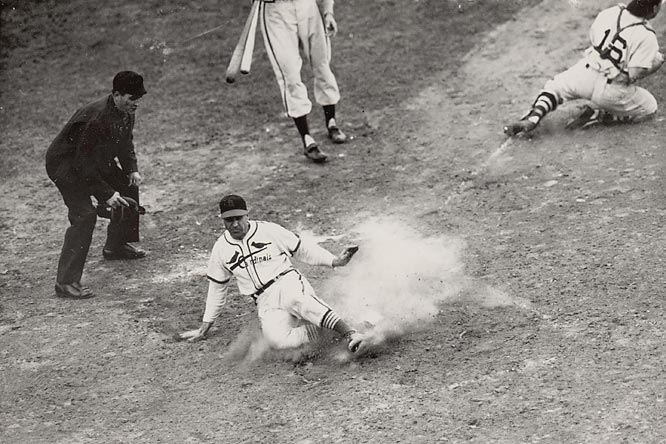
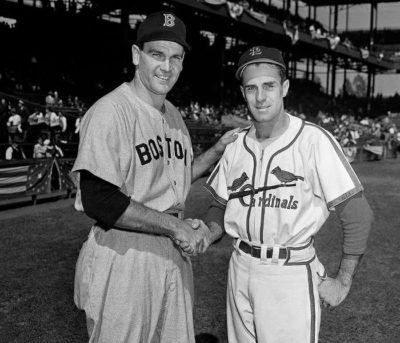
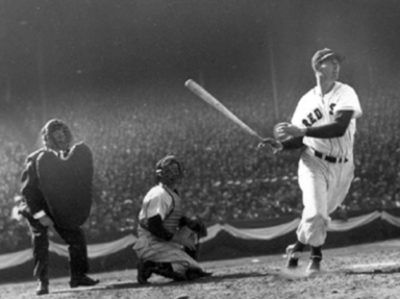
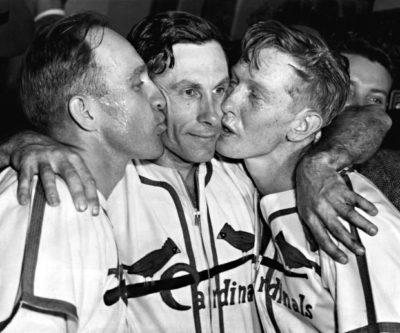
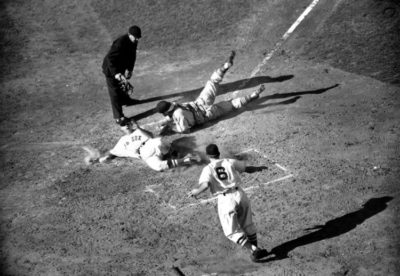
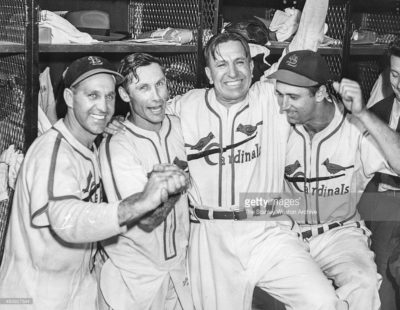
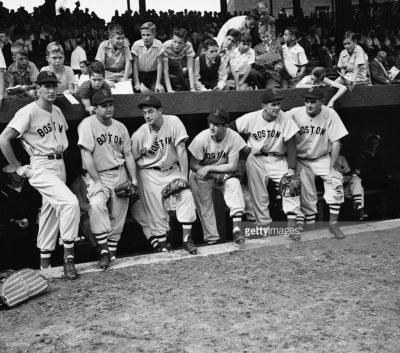
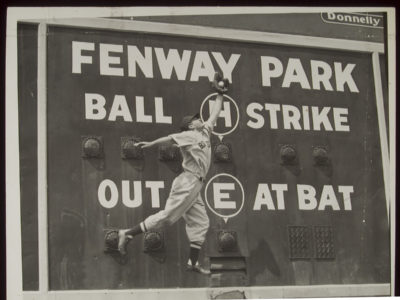
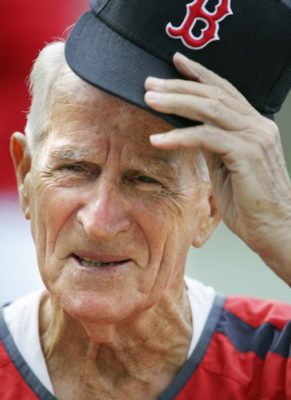
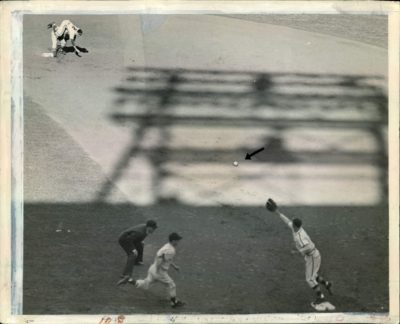
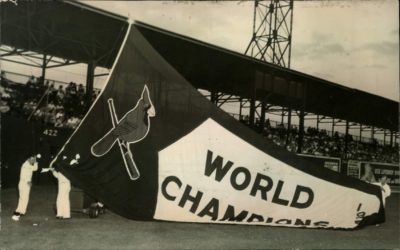
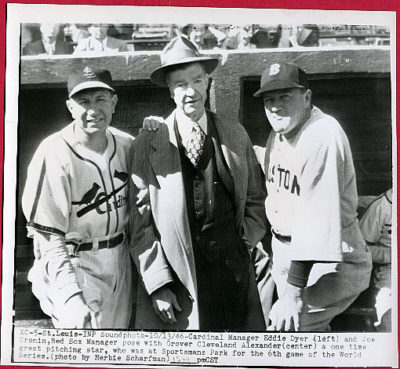
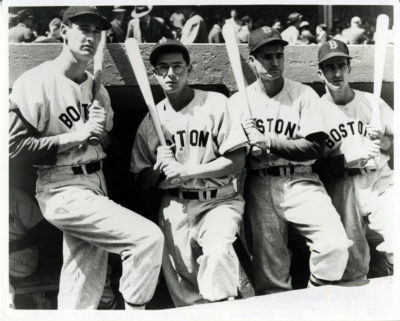
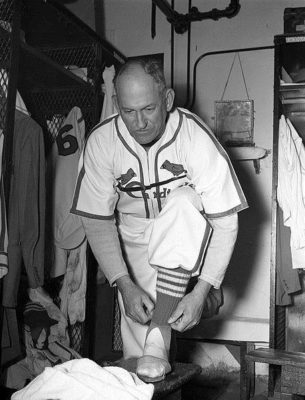
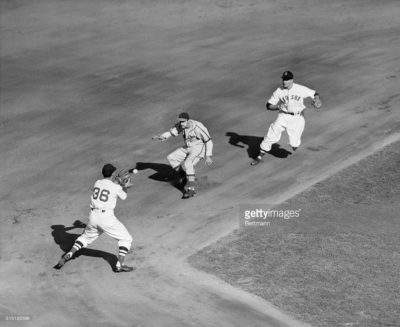
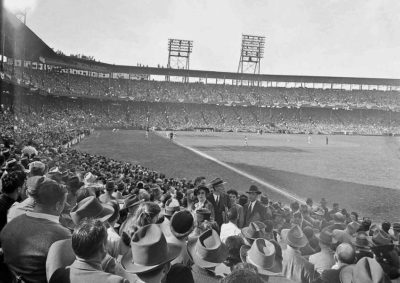
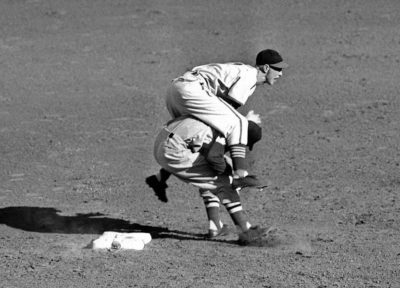
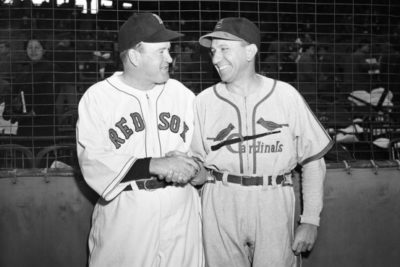
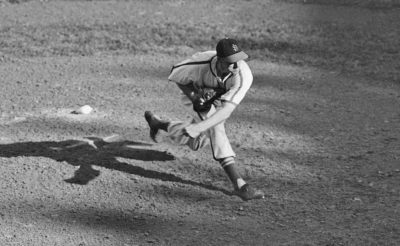
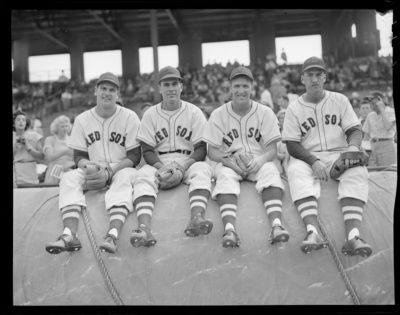
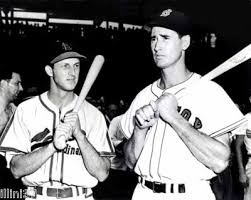
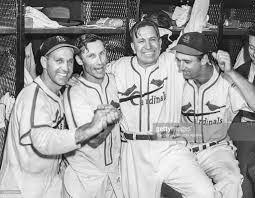
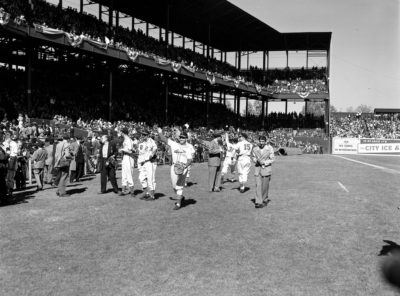
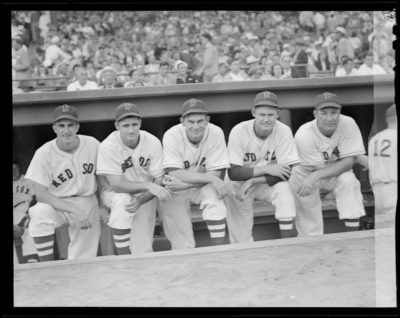
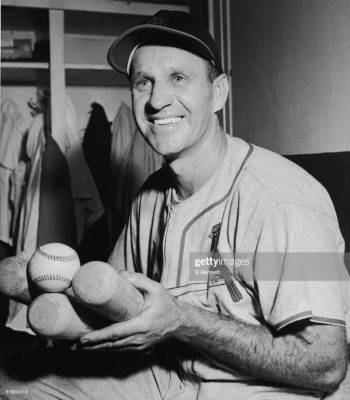
Don’t think the video catches much of Culbertson or Pesky as it is focused on Slaughter.
For years, I thought Pesky was the culprit. But as I read some oral histories of the players involved in the game, tipped my opinion that Pesky was not the goat in the play. Just my two cents.
I agree Paul. It’s tough to pick up much from the video.
Only Vince can “take a deep dive” into a not so clear video and come up with so many pertinent details. And, yes, I always thought Pesky was the goat for holding the ball too long. But it was really Slaughter’s extraordinary hustle that won the game.
“Harry the Hat” went 7 for 17 in the Series, with his long slicing “single” providing the possibility of a daring play. Good point by Mr. J.
Neither Musial nor Williams had a great WS. Ted blamed himself for batting .200 but he was significantly injured during the classic.
Superb article, Mr. Jankowski. IMHO, this 1946 WS play, and it’s aftermath, illustrates {at least to me}, how fickle the Boston Red Sox faithful can be at times. After another “Series deciding” situation, they practically call for Bill Buckner’s assassination due to his miscue in Game 6 of the 1986 Fall Classic. In spite of the fact that many of them agreed that Slaughter’s safe scamper to the plate was because of Pesky’s lapse, they none-the-less named a foul pole in Fenway Park for him, and retire his number. From every account I’ve ever read about Slaughter, it’s been said that he was, indeed, an aggressive player. He took a page right out of Ty Cobb’s playbook, too….cocky, profane, and a Southern-born racist. Like Cobb, he was known to intentionally spike infielders. As Mr. Jankowski says, who to blame for Slaughter’s score will forever be up for debate. Thnx for sharing, Gary. “PLAY BALL” ! .
You know, Johnny Pesky is a guy I always think of as being in the Hall of Fame, but of course, he’s not. It’s like I’ve got brain lock on that or something! There’s a few other guys like that, too. Guys you always just assumed where in the Hall, but when you check it out, they’re not!
Another guy like that is Frankie Crossetti. I always have to do a double take. I’m always thinking he’s in the HOF!
A great moment in World Series history. Not sure if I would blame Pesky’s positioning to the degree that the author goes into…nor would I think it appropriate to refer to Slaughter as a racist as in one of the readers comments…sort of takes away from the attended purpose of the article.
Be that as it may, there are some wonderful on the field color clips from this World Series from the HBO series “When It Was a Game” produced by Flagstaff Films.
There are several that if you slow down the video you can clearly see down the right field line the billboard promoting Harry Caray and Gabby Street on the radio for Cardinal broadcasts! Gabby Street was the first partner Harry mentioned in his Hall of Fame induction speech.
Flagstaff Films has a site on X, and they continually release clips from the HBO Series, along with material that didn’t make it in. Great resource to enjoy baseball’s past and the romanticism we have for the game…especially for an old guy like me!
A great article and fine analysis about an amazing play in one of the greatest World Series games. It was nice to finally see the video about a play I had only read about. I guess the debate will go on.